Everything You Need to Know About WordPress Image Size Limitations
![Everything You Need to Know About WordPress Image Size Limitations WordPress Image Sizes [+ Customization, Optimization, Increase Image Size]](https://shortpixel.com/blog/wp-content/uploads/2023/11/WordPress-Image-Sizes-Customization-Optimization-Increase-Image-Size-1024x576.png)
“One picture is worth ten thousand words.”
WordPress took this Chinese proverb seriously and focused on making the best use of images.
However, to balance storage size and image quality, WordPress has provided proper image sizes and image dimension configuration. Thus, there’s a WordPress image size limit for each photo you upload.
Now, if you want to customize, optimize, or increase the default image sizes and upload some bigger or larger images, you can change the WordPress image size limitations.
However, you must ensure that customizing image size doesn’t add extra load to your website. It will increase the page loading time significantly and also irritate your visitors.
In this article, We’ll go over some of the most important aspects of WordPress image sizes, such as image optimization, image size customization, and maximizing image upload sizes.
Let’s dive deep!
Quick Takeaways
- WordPress resizes big images (-scaled versions) to improve website performance.
- Adjusting image sizes can enhance your website, but larger images can slow down loading times.
- Optimizing images, such as with ShortPixel Image Optimizer, is essential for maintaining fast load speeds and good SEO rankings.
- WordPress provides default image sizes and options to adjust them for different uses.
- You can increase the maximum image upload size through various methods, including hosting settings, plugins, or modifying server files.
Why is WordPress Image Size Limitation Important?
WordPress image size limits help your website load faster, save space, and rank higher in Google searches. Large images can slow down your website and consume an excessive amount of data. Smaller images keep your website running smoothly for everyone.
Let’s look at some of the benefits of WordPress image size limitations:
Faster Website Performance
Since images are a big part of websites, larger images make a webpage heavier and slower to load. Images usually make up one-third of your web page’s weight. So you need to reduce the size as much as possible. Thus, to increase page loading speed in WordPress, reduce image sizes.
Storage Efficiency
Images take up half to a third of a webpage’s file size. Large images increase webpage size, requiring more hosting space and bandwidth to reach users. But, by reducing image sizes, the webpage becomes much smaller, making storage more efficient.
Better User Experience
You don’t always need an HD-quality large image. For instance, a small image is fine for a logo. Larger image sizes take a long time to load. Larger images load slowly, and slow-loading websites create a terrible user experience, which puts off the users.
Device Responsiveness
It’s essential to keep your image sizes consistent in WordPress. This makes your website look great on big screens and small phones. Using the right image sizes adapts the image on bigger and smaller screens. So, your website stays responsive regardless of the dimensions of the device screens.
Better SEO Ranking
Images on a website determine its size, which affects its loading speed. Google considers the loading speed of a website as one of its key ranking factors. Thus, even a few kilobytes of data affect how fast your website loads and how many search engine visitors find it.
What Are the Default WordPress Image Sizes?
Image sizes are crucial in WordPress because they directly impact how well your website functions. Think of image sizes like choosing the right clothes to wear—not too big, not too small.
Different situations require various image sizes. When you upload an image to WordPress, it automatically generates multiple versions. Likewise, it creates four more versions of these images for various uses. So, you don’t have to.
Well, the best image size depends on its use case,
- WordPress full-width background image: The ideal size is 1080 pixels in height, 1920 pixels in width, 16:9 aspect ratio, and 72 PPI.
- WordPress hero image: The ideal size is 720 pixels in height, 1200 pixels in width, 16:9 aspect ratio, and 72 PPI.
- WordPress featured image: Height 1200 pixels, width 628 pixels, aspect ratio 16:8.4, and PPI 72 are ideal for WordPress featured image size.
- WordPress post image: The size of post images depends on your choice. The best image is wide enough and not too tall.
Let’s learn about the default WordPress image sizes:
- Thumbnail: These images are small images. It includes a 150×150-pixel version for images such as page thumbnails and blog posts.
- Medium: A bit larger at 300×300 pixels, it’s used in posts, banners, widgets, and as thumbnails in image galleries.
- Medium-Large: This one is 768×768 pixels and can be used for featured images in posts, content images, blog post headers, sliders, and larger image gallery thumbnails.
- Large: With a resolution of 1024×1024 pixels, it’s ideal for page and post-featured images, gallery images, headers, sliders, lightboxes, and backgrounds.
- -scaled: When a new image is uploaded, WordPress checks whether it’s considered a “large” image by comparing its height or width to a set 2560px threshold. If true, then a -scaled version is created. This feature was introduced in version 5.3.
- Full Size: The original image size. It’s useful for backgrounds, gallery images, and anything larger than the default large size.
What Is the Maximum Upload Size in WordPress?
WordPress doesn’t have a set maximum upload size.
Hosting providers set these image size limits, ranging from 4MB to 128 MB. This limit helps you manage your server resources.
Your upload will fail if the file is larger than the limit. This limitation serves two critical purposes:
- Prevents large file uploads
- Avoid harmful file uploads for security
Your website stays up and running thanks to this limit. Too many resource requests could slow it down or even cause it to crash.
How to Optimize Your Images to Meet the WordPress Image Size Limit
WordPress requires specific image sizes to function correctly. Each image section, such as thumbnails or background images, must be an exact size. Thus, you should optimize your images to fit the WordPress image size limit.
To optimize your website images, you can use ShortPixel Image Optimizer.
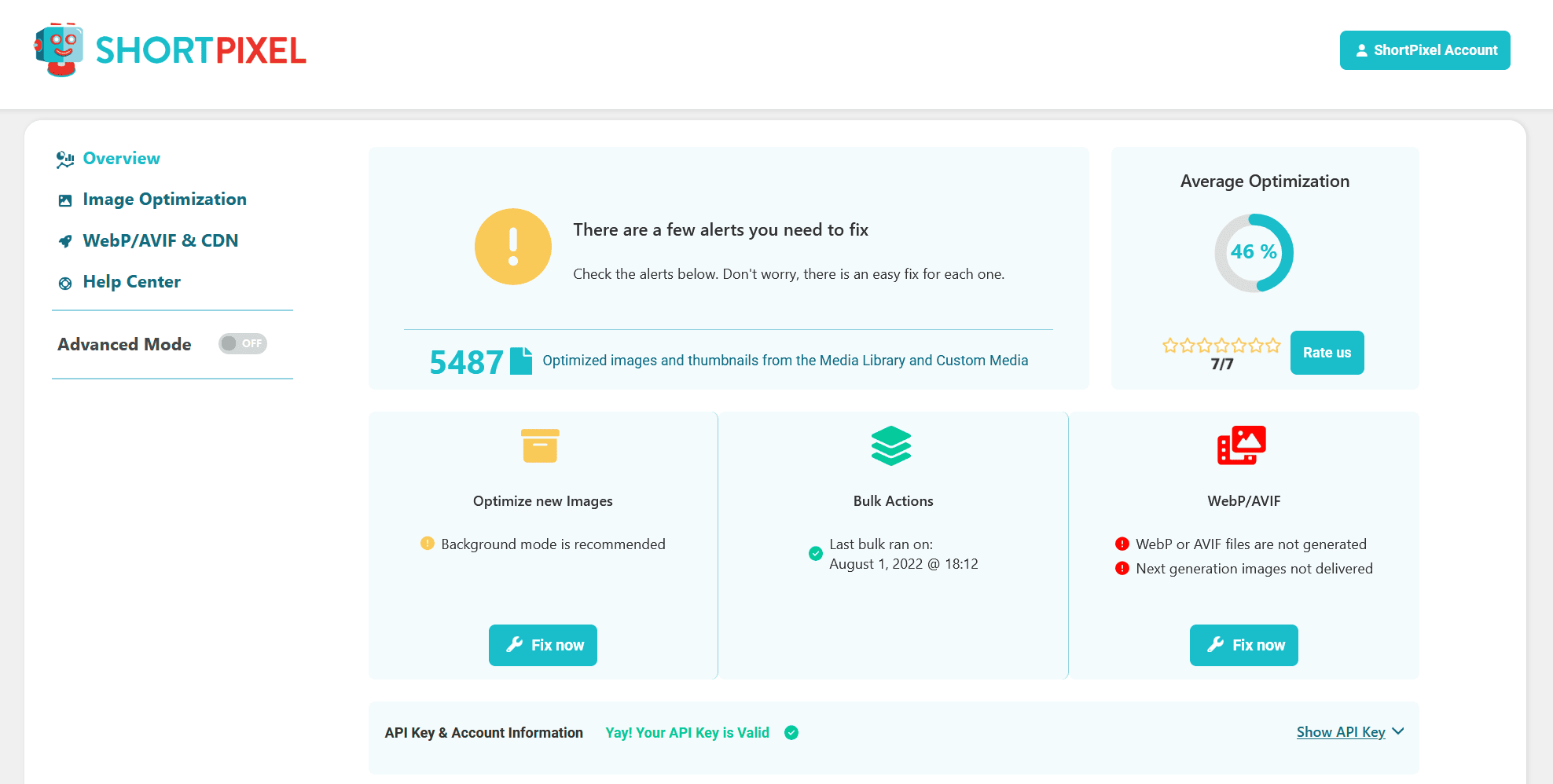
Now, why should you use ShortPixel?
It’s not because it’s our product and we recommend it, but because most industry experts do.
You can learn more from the expert HubPost image compression research, which found that ShortPixel has the best image compression rate and saves the most space.
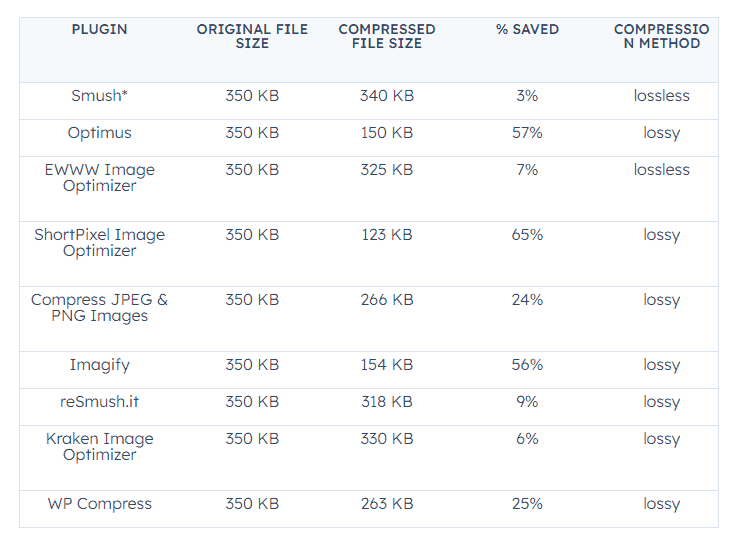
Now, you can use ShortPixel to optimize your image with just a few clicks! It allows you to compress WordPress images and resize the compressed image.
We also recommend compressing images after uploading them, not before. You can learn why here.
How to Change WordPress Default Image Sizes
By default, WordPress has three image sizes:
- Thumbnail
- Medium
- Full Size
These image sizes have specific dimensions. If you need a smaller or larger image, you can change the WordPress default image size.
Changing the default image size in WordPress is simple. Here’s how to do it:
Step 1: Open your WordPress admin dashboard. Navigate to the Settings and click on the Media.
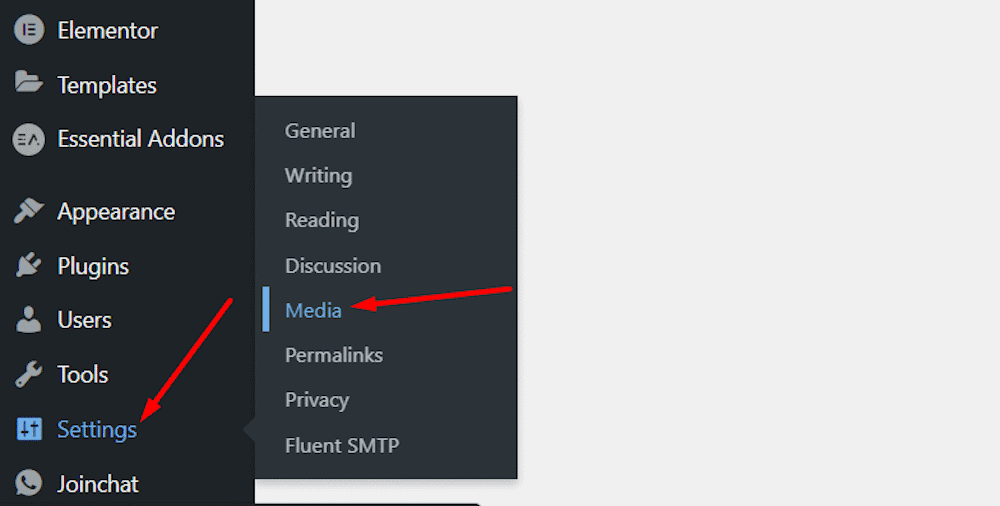
Step 2: Set your desired image dimension from the Media Settings window.
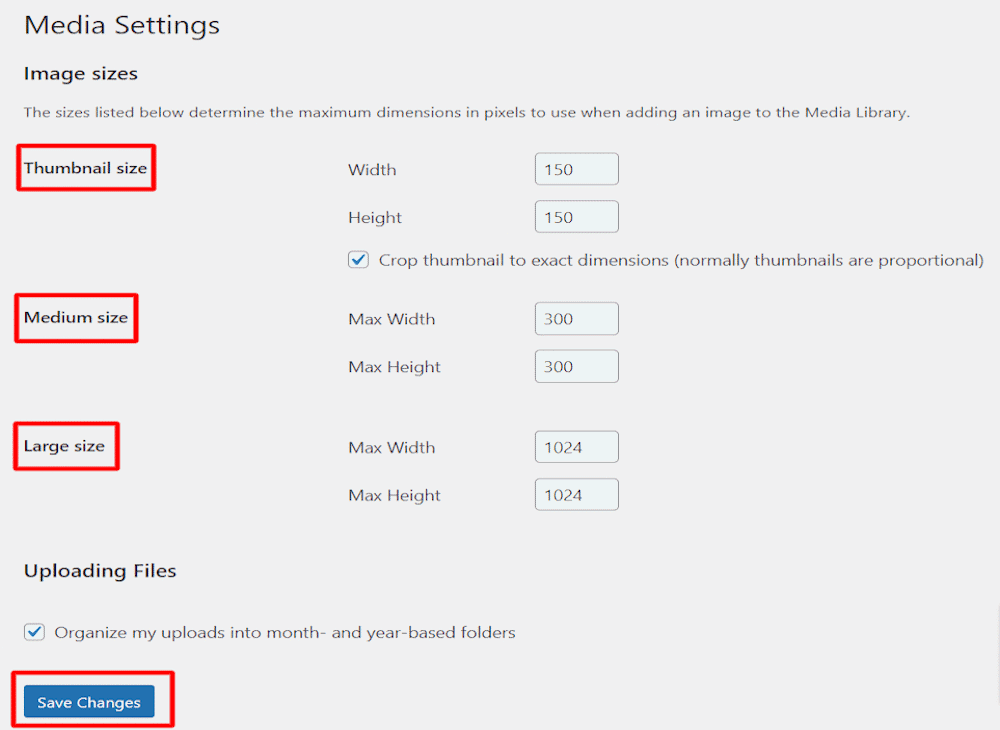
Step 3: After you’ve entered the image dimensions you want, click Save Changes.
How to Add Custom Image Sizes to WordPress
If you need a specific WordPress image size, say, for your website logo, you can create custom image sizes for your WordPress website.
You can add as many as you need. Here’s how to do it:
Step 1: Add Image Sizes to Your Theme’s functions.php file.
To add custom image sizes to the Theme’s functions.php file, you need to locate the file.
Follow this navigation route to the file,
Admin dashboard > Appearance > Theme File Editor >Theme’s functions.php file.
To enable custom image sizes, add this line of code to your functions.php file:
[php]
add_theme_support( ‘logo-images’ );
[/php]
This line activates the add_image_size() function for custom image sizes.
Now, create your custom image sizes with code like these examples:
[php]
add_image_size('logo-image size', 100, 200 );
[/php]
Step 2: Display Custom Sizes in Your Theme
You have successfully added a new custom WordPress image size. But these custom dimensions are neither accepted nor visible in your WordPress themes. So, you need to approve it manually.
Use this code within your theme files’ post loop to show your custom image size:
[php]
<?php the_logo_image( ‘your-specified-image-size’ ); ?>
[/php]Replace ‘your-specified-image-size’ with the name you chose for your custom image size (e.g., ‘‘logo-image-size‘).
6 Ways to Increase the Max Upload WordPress Image Size
If you’re having trouble uploading large images to your WordPress site, you should increase the WordPress image size limit. This can sound tricky, but it’s just a few steps you can follow.
We’ll look at six simple ways to allow you to maximize WordPress image sizes and files on your website:
Contact Your Hosting Provider for Help
Editing and adjusting server files to increase the maximum upload file size in WordPress requires technical knowledge. And success is not guaranteed since there are compatibility issues.
So, what is the simplest way to increase image size limit in WordPress?
It’s simple! Contact your hosting provider and ask them to increase the maximum upload of WordPress image file size.
This method is a surefire way to get the job done. Say you are using Bluehost hosting services. You can use their live chat or call or email them directly to increase WordPress image size limits.
Update Your ‘.htaccess’ File.
Increasing the maximum upload file size in WordPress is simple by editing the .htaccess file.
You can use the .htaccess file to increase the maximum media file upload size in WordPress by following these steps:
Step 1: Access the .htaccess File
You can get to your website’s .htaccess file via FTP or cPanel. Locate the .htaccess file in the root directory of your WordPress installation.
Before making any changes to your .htaccess file, create a backup. This file manages server settings, such as upload size limits. Use a text editor to open and edit the .htaccess file.
Step 2: Modify the .htaccess File
Insert the following lines of code at the bottom of your .htaccess file:
php_value upload_max_filesize 10M
php_value post_max_size 10M
php_value max_execution_time 120
php_value max_input_time 120These lines of code increase the maximum execution time, set the maximum upload file size to 10 megabytes, and adjust the full input time in seconds for your server.
Step 3: Save and Upload
Save your changes to the .htaccess file and upload it back to your server if needed.
Step 4: Test the New Upload Limit
Save your changes to the .htaccess file and upload it back to your server if needed. Navigate to “Media” and try uploading a larger file than the previous limit. If it works, you’ve successfully increased the upload size limit.
Change PHP Options via cPanel
If you can access your hosting cPanel, you can use the PHP options to increase the maximum file upload limit in WordPress.
Follow these steps to increase the maximum media file upload size in WordPress by changing PHP options through cPanel:
Step 1: Access Your cPanel
Log in to your hosting account and access your cPanel dashboard.
Step 2: Locate “Select PHP Version” File
The precise location and name of this feature may differ depending on your hosting provider, but you’re looking for a PHP settings section.
It’s often labeled as “PHP Options,” “Select PHP Version,” or “PHP Configuration.”
Step 3: Modify PHP Settings
Within the “Select PHP Version,” look for settings related to “upload_max_filesize,” “post_max_size,” and “max_execution_time.” These WordPress image size settings control the maximum file upload size and script execution time.
- upload_max_filesize: Set this to the maximum WordPress image size you want to allow uploads. For example, if you allow 64MB uploads, select “64M.”
- post_max_size: Set this to a value slightly larger than your upload_max_filesize. For example, if you set upload_max_filesize to 64M, set post_max_size to “65M.”
- max_execution_time: Increase this value to ensure the server has enough time to process larger uploads. You can set it to 300 seconds or more.
After modifying the PHP settings, remember to save your changes.
Create or Edit an Existing php.ini File
Follow these steps to increase the maximum WordPress image size by creating or editing an existing php.ini file:
Step 1: Access Your php.ini File
Access your website’s php.ini file through your hosting provider’s control panel or use an FTP client.
Step 2: Create or Modify The php.ini File
Open the existing php.ini file using a text editor. Inside the php.ini file, add the following lines to increase the maximum upload file size and adjust the execution times:
upload_max_filesize = 64M
post_max_size = 64M
max_execution_time = 300
max_input_time = 300You can adjust the values (e.g., 64M) to set the maximum upload file size and execution times according to your needs.
Step three: Save the php.ini File
After making the changes, save the php.ini file.
If you don’t have a php.ini file, you can create one, add the max upload file size code, and upload it to the server.
Use a WordPress Plugin
If you’re not tech-savvy or don’t want to customize codes, a WordPress plugin can increase your maximum WordPress image size limit.
Here’s how you can maximize the WordPress blog image size limit using a WordPress plugin :
- Install and activate the Increase Maximum Upload File Size WordPress plugin.
- Return to your WordPress admin dashboard and go to Media.
- Click on Increase Upload Limit.
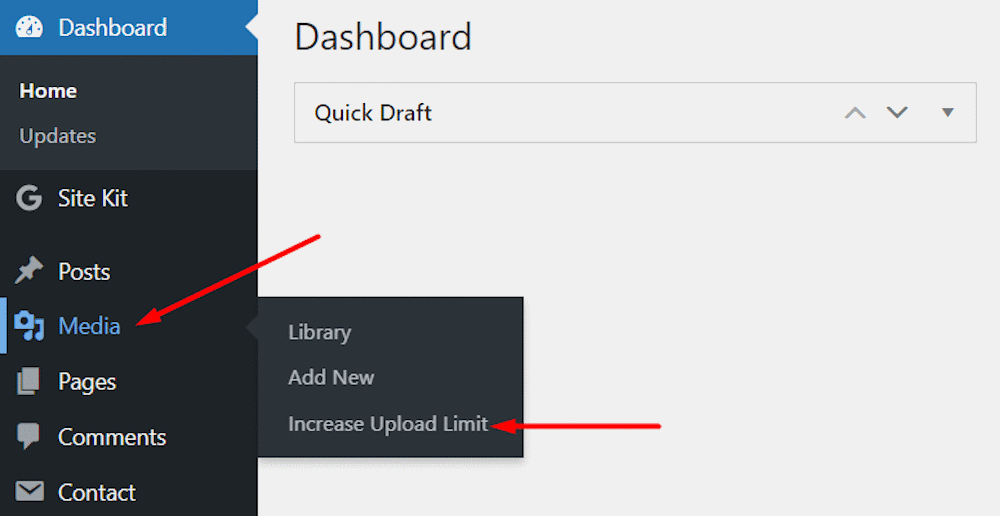
You’ll see your current maximum WordPress image size limit. To increase it, choose your desired size from the Choose Maximum Upload File Size options. You can also set the maximum execution time using the Maximum Execution Time option. Remember to save the changes.
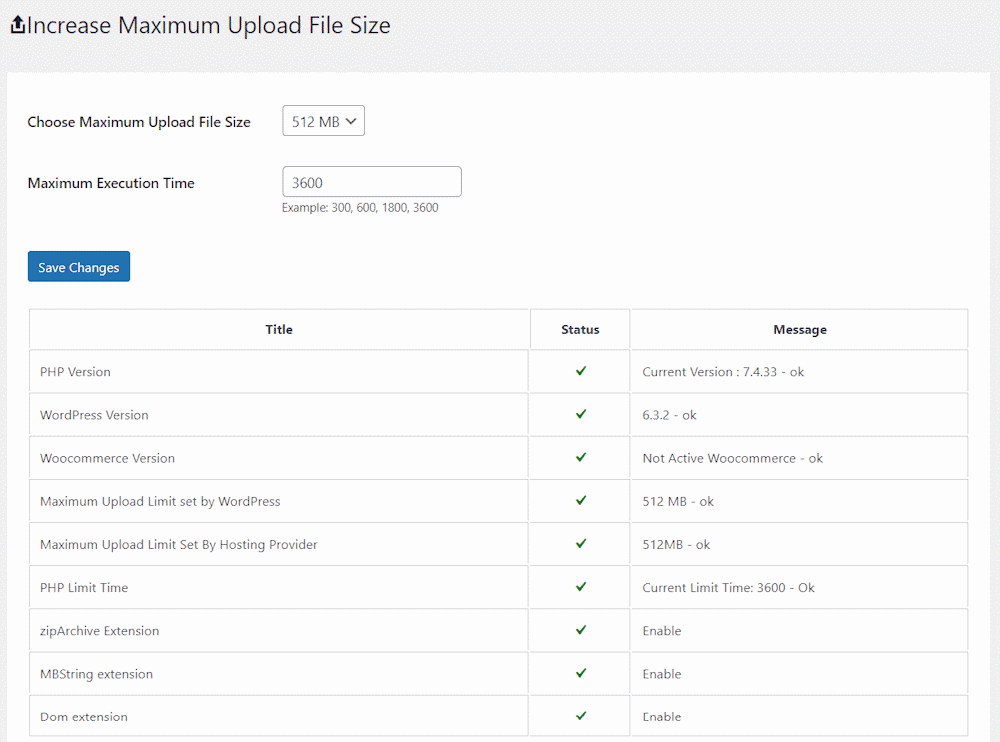
Congrats! You’ve successfully increased the maximum WordPress image size.
Upload Files via FTP/SFTP
You can increase the maximum size of media files that you can upload to WordPress by using FTP or SFTP. It doesn’t directly change the upload limit, but it provides another method for dealing with larger files.
Step 1: Prepare Your Large Media File
Ensure your large media file is ready for upload and you have it on your computer.
Step 2: Ensure your FTP/SFTP Client is ready
Use an FTP (File Transfer Protocol) or SFTP (Secure File Transfer Protocol) client like FileZilla, Cyberduck, or WinSCP to transfer your large media file to your server.
Step 3: Connect to Your Server
Open your FTP/SFTP client and connect to your server using your hosting account’s credentials, including the server address, username, and password.
Step 4: Upload the Large Media File
Navigate to the directory where you want to save the large media file on your server. It could be in your WordPress uploads folder or another directory you’ve created.
Drag and drop the large media file from your local computer to the server using your FTP/SFTP client.
Step 5: Import the File to WordPress
Once the large media file is on your server, WordPress may not automatically recognize it. You can use the Add From Server plugin to import the uploaded file into your WordPress media library.
How to Use the WordPress Built-In Image Size Editor
WordPress comes with a built-in image editor that allows you to make quick and easy adjustments to your WordPress post image size. Here’s how to use it to resize image:
Step 1: Accessing the Image Editor
Start by logging into your WordPress admin panel and navigating to Media > Library. Click on the image you want to resize.
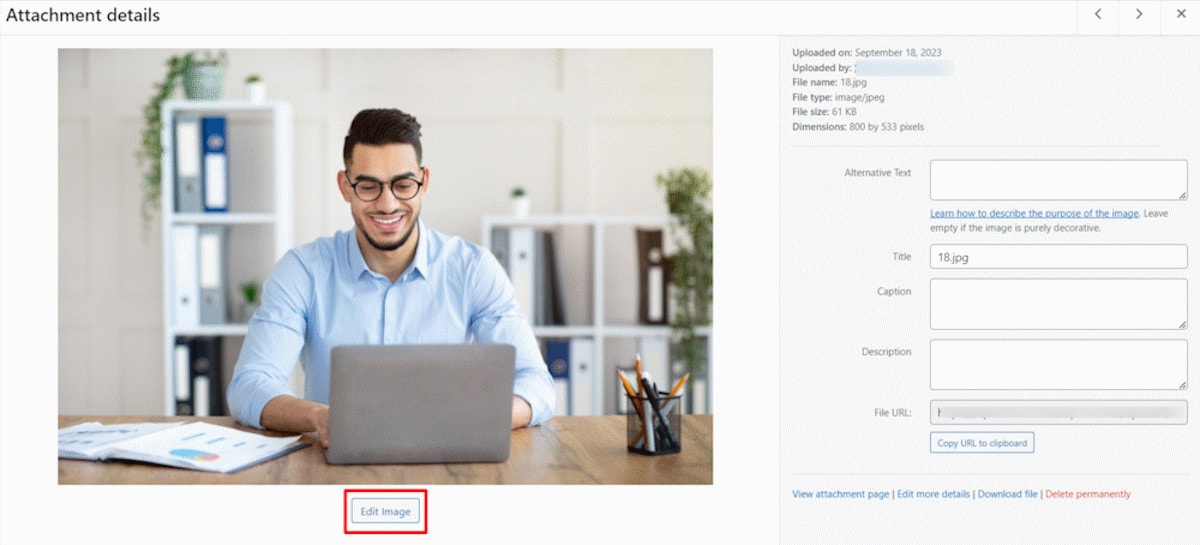
Step 2: Resizing the image
Now, click on the Edit image > Scale. Then, find and customize the New Dimensions you want to set.
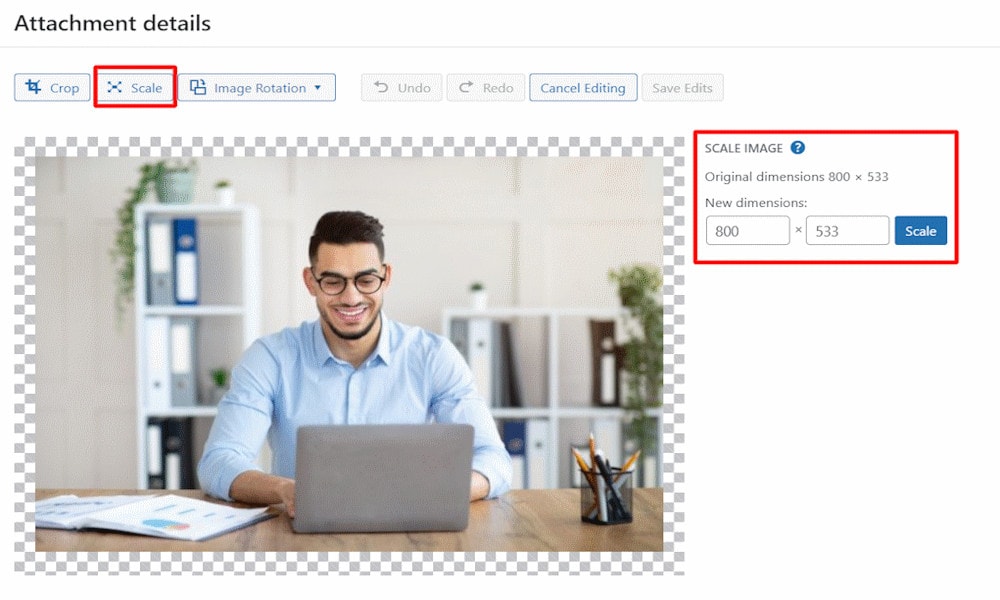
Summary
Since it’s your business and your customers, you can set the best parameters to provide the best service. Understanding WordPress image sizes, limitations, optimization, and customization can help you manage your website.
You can ensure your pictures are just the right size for fast loading and good quality. If you want better quality, you can change the WordPress image size limit or compress images to save space.
With a little bit of tweaking, your site will be both beautiful and quick. Keep these ideas about WordPress image sizes in mind, and you’ll be all set with your WordPress images.
Compress all your GIF images online for free!
Tired of heavy files? Compress your GIF files online effortlessly with ShortPixel.
FAQs
What is the recommended file size and resolution for images used in WordPress posts and pages?
For WordPress posts and pages, aim to keep image file sizes under 150 KB, ideally around 100 KB, though the exact size depends on the image container. For larger images, like full-width banners, slightly bigger file sizes are acceptable. A resolution of 72 DPI is recommended for web use, as higher resolutions aren’t needed for screen display.
What size should images be for WordPress?
For WordPress, image sizes should be optimized based on the layout and use case. Typically, images should be under 150-200 KB for fast loading, but larger images like full-width banners or hero images can go up to 300-400KB if necessary. For dimensions, ensure images match the container size where they’ll be displayed. For example, a full-width image might be 1920 x 1080 pixels. Always resize images to fit the space they’re intended for, or use a plugin like ShortPixel Adaptive Images or FastPixel to automatically serve the right sizes, without worrying about manual resizing.
What is the image size limit in WordPress?
The default image file size limit in WordPress is typically a few MB, but this can vary depending on your hosting provider. Some hosts may allow larger uploads, while others may set a lower limit. You can check or adjust this limit in your WordPress settings or contact your host for more information. For better performance, it’s recommended to keep images well below this limit.
Can the size of images be reduced in WordPress?
Yes, the size of images can be reduced in WordPress with a plugin like ShortPixel to automatically compress images as they’re uploaded, reducing file size without sacrificing quality, which helps improve your site’s load times.
Does WordPress auto resize images?
Yes, WordPress automatically resizes large images upon upload. It also creates smaller versions of your images in various sizes to improve performance. These resized images are often displayed across the website (instead of the original image uploaded) based on your theme or plugin settings, ensuring optimal loading times and a better user experience. However, using a plugin like ShortPixel can help reduce file sizes further.
What is the best image size for WordPress blog post?
For a WordPress blog post, aim for images around 1200px wide. This size works well for most screen sizes and ensures fast loading times without sacrificing quality. For optimized performance, keep the file size under 200 KB if possible. Using a plugin like ShortPixel can help compress images without losing quality.